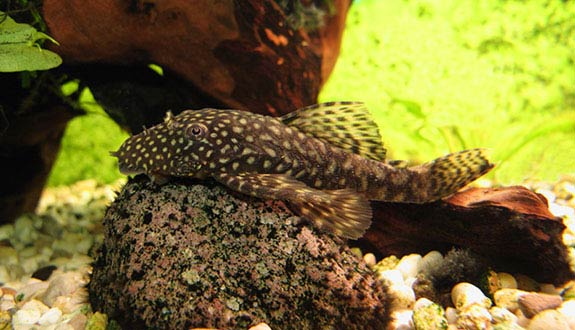

Alternative species (click on the thumbnail to see the card)
Names
Scientific name
Ancistrus sp
Common name
Ancistrus
Origin

Origin: South America, Guyana
Biotope: Amazonian
Dimorphism
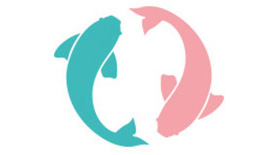
The male has thorns on its head. In females, they are smaller or absent
Group
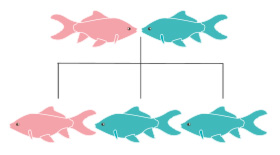
Loricariidae
Volume

100 L / 22 imp gal / 26 US gal for 1
200 L / 44 imp gal / 53 US gal for 3
Parameters

T°: 24 to 28°C or 75 to 82°F
pH: 6 to 7
Hardness: 3 to 8°dGH
Difficulty

Easy
Size

10 to 12 cm (4 to 5")
Longevity

8 to 12 years
Living zone
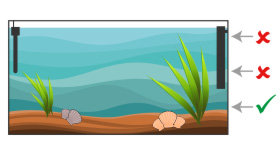
Depth
Individuals

1 to 3
Food
How to feed the Ancistrus?
Food
How to feed the Ancistrus?
Often these fish are sold as window cleaners. Indeed, they will gladly integrate the algae (or more precisely the biofilm that covers the substrate, roots or rocks) to their diet, but this does not exempt them from feeding specifically.
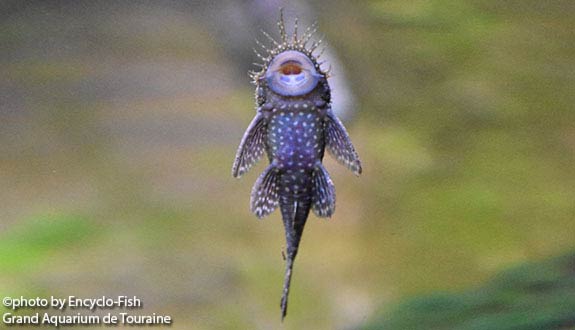
Indeed, they are omnivores that require an important vegetable part in their diet. You can give them for example zucchini or cucumber cut into slices, spinach, salad or boiled cabbage. Banana and potatoes can also be part of the menu. Pellets for groundfish will also go very well.
For the carnivorous part, they will appreciate the worms of vases, the daphnies or the mosquito larvae.
To optimize their meals, distribute their food when the lights go out! If this fish is well fed, it will not touch the plants of your aquarium, so do not neglect this point!
Behavior
What kind of behavior does the Ancistrus have?
Behavior
What kind of behavior does the Ancistrus have?
The Ancistrus is a rather shy fish with a twilight tendency: it will spend its day hidden in cracks or holes that it will dig. It will not wake up until evening. It will therefore seem not active and will rarely move.
It can live alone in an aquarium of at least 100 liters (22 imp gal / 26 US gal), but the presence of its congeners is preferable.
In this case, keep them in pairs or in groups of three (one male and two female, in an aquarium of at least 200 liters (44 imp gal / 53 US gal). They must be kept in pairs or in groups of three (one male and two female, in an aquarium of at least 200 liters (44 imp gal / 53 US gal. On the other hand, the maintenance of several males is not advised because they are quite territorial and can fight.
It can sometimes bury itself in the sand, which is quite fun to see!
Cohabitation
Who can live with the Ancistrus?
Cohabitation
Who can live with the Ancistrus?
This very peaceful species can live in a community aquarium without difficulty. You can choose for example roommates such as Tetras, Amazonian Cichlids. On the other hand, it can be territorial with the members of its species (especially between males) and with the Corydoras.
In general, avoid introducing other groundfish (Loach, Pleco, Corydoras...) as well as shrimps (the cohabitation with them is rather uncertain) with your Ancistrus.
Breeding
How to breed the Ancistrus?
Breeding
How to breed the Ancistrus?
Breeding is very easy. It can occur as a couple or in a group (with a little more females than a male). It can trigger spontaneously if you feed your Ancistrus abundantly, especially with live food. Then make a good change of water with cooler water a few degrees.
To set up an ideal nesting area, you can also install tubes specifically for Ancistrus spawning, or coconut halves for the male to nest there. The recommended water parameters are a temperature of 26°C (79F) and a pH of around 7.
The female lays a cluster of 50 to 100 eggs that the male fertilizes afterwards. The latter will defend the place of breeding and the eggs fiercely. During the incubation time, the male will ventilate the eggs and sort them (he will remove sick or infertile eggs). If you wish, you can remove the bunch to place it in a breeding tank before hatching. The incubation lasts from 4 to 10 days. Fry food: nauplies of artemia and crushed vegetables.
The problem is that it is difficult to keep several males in one tank because of their territorial nature. The risk is to find yourself with dozens of small Ancistrus to place, which can be difficult given the many and common breeding of this species.
Its aquarium
Which aquarium for the Ancistrus?
Its aquarium
Which aquarium for the Ancistrus?
Provide plenty of hiding places and shaded areas so the Ancistrus can easily hide during the day.
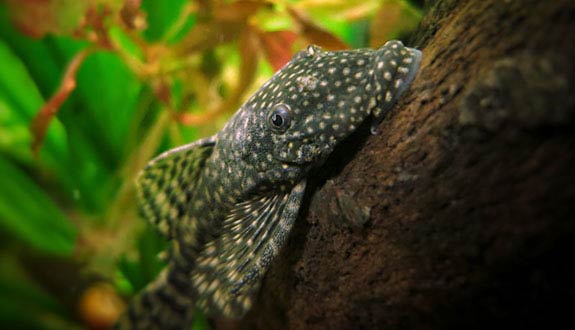
It will also appreciate the presence of root (which will bring it cellulose to facilitate its digestion).
As it lives at the bottom of the aquarium, it is important that the sand is not sharp, with free beaches so that it can move, feed, bury itself... You can plant real plants, because the Ancistrus does not touch the plants when it is well nourished (cf «Food»). On the other hand, avoid too small plants like Echinodorus that will be consumed for sure! To get as close as possible to its natural biotope, you can filter on peat and introduce oak leaves or alder fruits into your aquarium. Finally, a current near the ground will please it a lot!
Good To know
Find all additional information!
Good To know
Find all additional information!
The Ancistrus is not very demanding concerning its water and it adapts to many parameters of water. Finally, only temperature is important (between 23°C and 28°C (73 to 82°F) ). This makes it a species well suited to beginners and very common in aquarium hobby. The Ancistrus is, however, quite sensitive to water pollution and drug treatments.
Those who buy it for its ability to clean windows will certainly be disappointed with the result! Indeed, the Ancistrus will never dispense the maintenance of the aquarium by the aquarist.
This is a hybrid fish specially «designed» for the aquarium hobby.
The general name «Ancistrus» includes about sixty species that are now quite difficult to differentiate.
How not to confuse an Ancistrus and a Pleco (Plecostomus)? This question is important because the Pleco can exceed 35 cm (14 inches)! Plecos do not have the spines found on the Ancistrus’ heads. They are also much bigger. Other differences are at the tail, dorsal fin and head shape:

There are many colour variations, such as the Ancistrus Gold, the Ancistrus Albinos, the Ancistrus Sailing:
Ancistrus Albinos
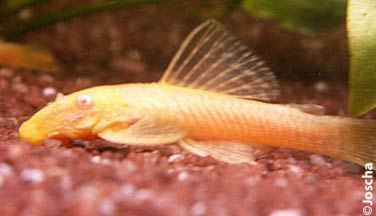
Ancistrus sp orange brown
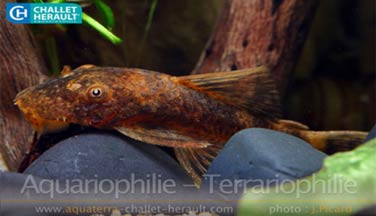
Ancistrus sp white seam
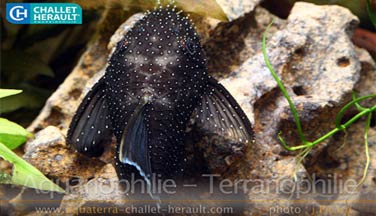
Yours photos!
Comments
Sort by:
Please login to post comments
